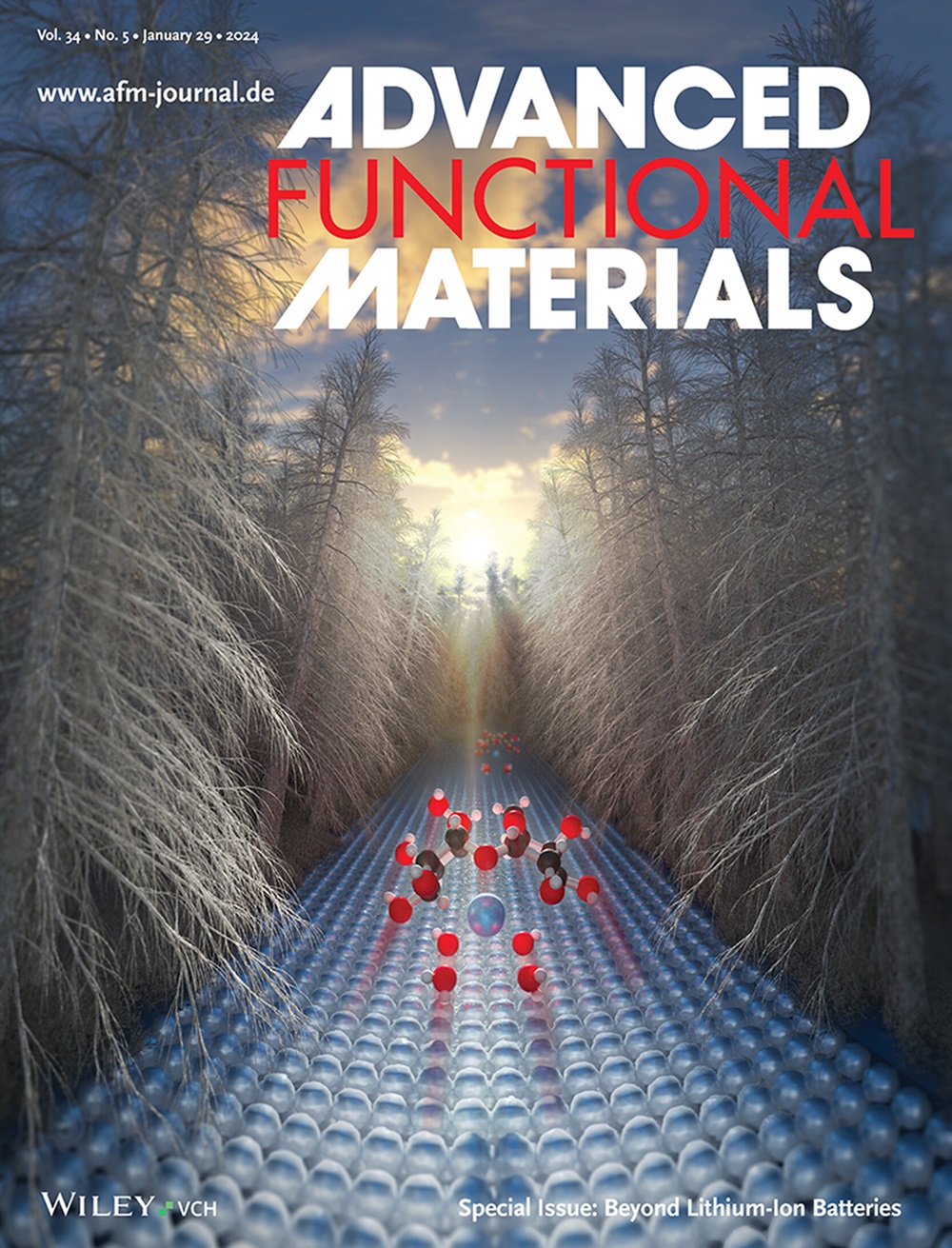Synergistic Gradient Design of a Sandwich-Structured Heterogeneous Anode for Improved Stability in Aqueous Zinc-Ion Batteries
IF 18.5
1区 材料科学
Q1 CHEMISTRY, MULTIDISCIPLINARY
引用次数: 0
Abstract
Aqueous Zn-ion batteries provide a low-cost energy storage solution but face challenges such as dendrite formation and interface instability, which become more pronounced at high currents and capacities. Herein, a scalable sandwich-structured heterogeneous anode is proposed for aqueous zinc batteries that integrate three functionally synergistic layers. A robust 3D ZnO@C substrate (from calcined Bio-MOF-100, BMC) with dense nucleation sites guides orderly Zn deposition, while a controllable pre-deposited Zn intermediate layer precisely regulates Zn2⁺ flux. An artificial indium-based protective top-layer that chemically isolates the active Zn from the electrolyte, effectively suppresses interfacial corrosion, and enhances interlayer contact to minimize impedance while maintaining structural integrity during cycling. The structural synergies endow the symmetric cell with an ultra-long cycle life exceeding 2000 h and stable Zn plating/stripping at a remarkable depth of discharge (76%) under high current/areal capacity conditions (6 mA cm−2/12 mAh cm−2). Additionally, the BMC@Zn@In//(NH4)2V10O25·8H2O full battery achieves a stable lifespan of 5000 cycles, while the BMC@Zn@In//activated carbon hybrid supercapacitor demonstrates an impressive cycle life of 16 000 cycles. This study identifies a synergistic mechanism for an ultra-stable Zn anode with promising applications in aqueous Zn-ion batteries.

求助全文
约1分钟内获得全文
求助全文
来源期刊

Advanced Functional Materials
工程技术-材料科学:综合
CiteScore
29.50
自引率
4.20%
发文量
2086
审稿时长
2.1 months
期刊介绍:
Firmly established as a top-tier materials science journal, Advanced Functional Materials reports breakthrough research in all aspects of materials science, including nanotechnology, chemistry, physics, and biology every week.
Advanced Functional Materials is known for its rapid and fair peer review, quality content, and high impact, making it the first choice of the international materials science community.
 求助内容:
求助内容: 应助结果提醒方式:
应助结果提醒方式:


